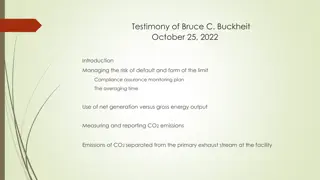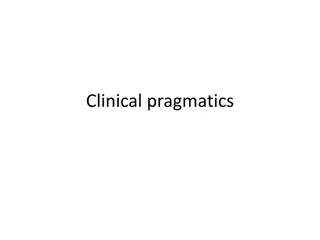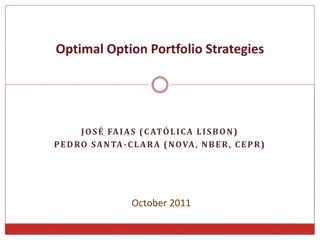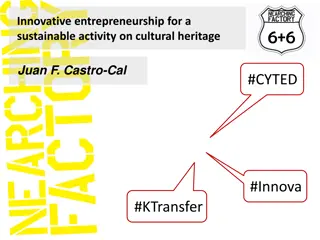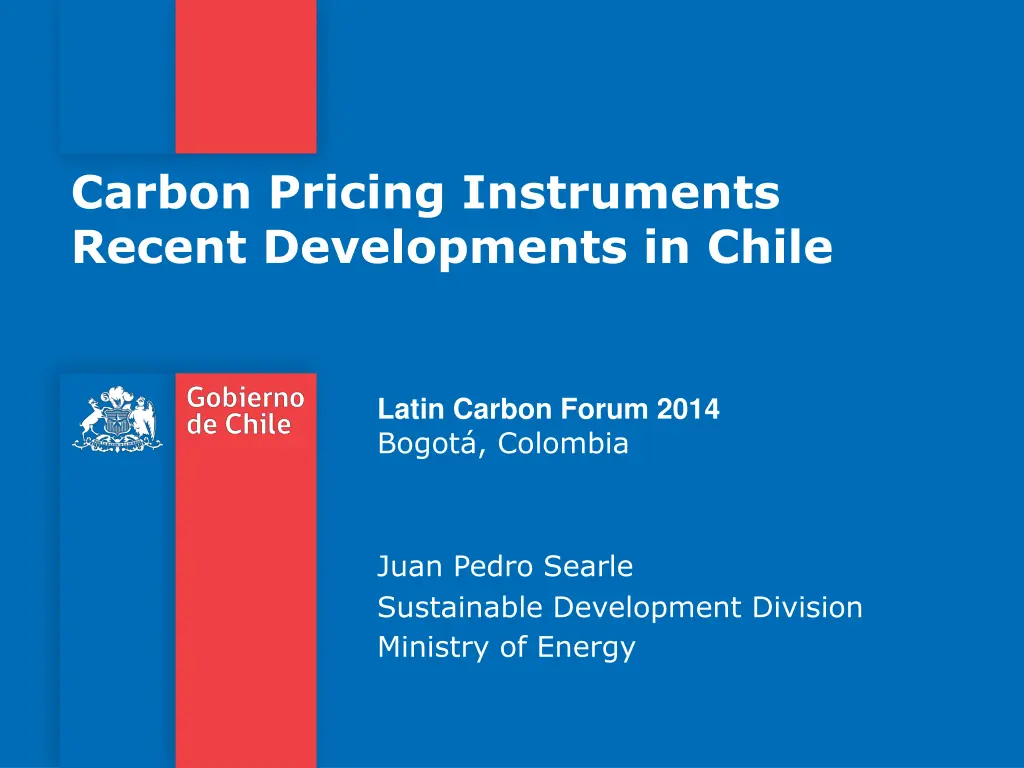
Recent Developments in Chile's Carbon Pricing
Explore recent developments in carbon pricing instruments in Chile, including initiatives like the Partnership for Market Readiness and the implementation of green taxes. Learn about tax reforms, NAMA portfolios, and strategies for low emissions development. Discover how Chile is tackling climate change through innovative carbon pricing approaches and sustainable energy solutions.
Download Presentation

Please find below an Image/Link to download the presentation.
The content on the website is provided AS IS for your information and personal use only. It may not be sold, licensed, or shared on other websites without obtaining consent from the author. If you encounter any issues during the download, it is possible that the publisher has removed the file from their server.
You are allowed to download the files provided on this website for personal or commercial use, subject to the condition that they are used lawfully. All files are the property of their respective owners.
The content on the website is provided AS IS for your information and personal use only. It may not be sold, licensed, or shared on other websites without obtaining consent from the author.
E N D
Presentation Transcript
Carbon Pricing Instruments Recent Developments in Chile Latin Carbon Forum 2014 Bogot , Colombia Juan Pedro Searle Sustainable Development Division Ministry of Energy
Presentation Climate Change Picture Carbon Pricing Instruments Partnership for Market Readiness (PMR) CO2 tax
Climate Change Picture NAMA portfolio Low Emissions Development Strategy Generic MRV Framework Biennial Update Report/3d National Communication Mitigation Actions and Planning Scenarios (MAPS) Intended Nationally Determined Constributions (INDCs) GHG Emissions Inventory System National and Sectoral Adaptation Plans Council of Ministers for Sustainability: climate change now under its scope of decision making Carbon pricing
Partnership for Market Readiness Objectives: To provide technical assistance to the Beneficiary in the design and implementation of a Monitoring, Reporting and Verification (MRV) framework and registry, and the design and preparation of one or more carbon pricing instruments in the energy sector. Activities include a Communication and stakeholder engagement strategy, as well as Regulatory, Economic and Institutional Analyses to assess the viability of a carbon pricing instrument for the energy sector. -3 million USD approved by the PMR Assembly -Currently under Grant Signature Process. -Implementation period: September 2014-september 2017
Long-awaited Tax Reform 8,200 MM$USD (3%GDP) $ Government s Program March 31, 2014 Educational Reform 20% (2014) 25% (2017) Gradual Increase Companies Stationary Sources Emissions (GREENTAXES) Decrease People (maximum personal income tax rate) 35% (2017) 40% Mobile Sources Products Increase tax alcoholic and non-alcoholic (sugar) beverages
Green Taxes (Article 5) Stationary sources An annual tax on emissions from boilers and turbines with a thermal input greater than or equal to 50 MWt (thermal megawatts). Power plants based on biomass are excluded. Two environmental externalities to be addressed: i) Global damage regarding climate change: tax on carbon dioxide (CO2) emissions; ii) Local damage to health: tax on emissions of Particulate Matter (PM), nitrogen oxides (NOx) and sulphur dioxide (SO2),
Green Taxes proposed amounts 5$ USD per ton emitted. Local damage to health: PM, Nox, SO2 Amount is established in accordance with the valuation of such damage, on the basis of a floor value set in the law (i.e., 0.1$ USD per ton of local pollutant). The draft points out that the tax should not be considered in the determination of the immediate marginal power cost, when this affects the marginal generating unit of the system (in line with provisions in article 149 of the General Law of Electrical Services)
Green Taxes (Article 2) Mobile sources An additional tax on the import of light and medium size vehicles. Diesel vehicles most impacted Passenger vehicles, taxis, others, are excluded. Targeted emissions: NOx Urban performance and NOx emissions will be determined by MTT. Impuesto en UTM = [(35 /rendimiento urbano (km/lt)) + (120 x g/km de NOx)] x (Precio de venta x 0,00000006)
Status of discussion at Congress Aug 14: Approved by the Senate Back to the Lower House
CO2and local pollutants preliminary findings Percentage of energy taxed: S1: 50% in 2017-2018, increasing afterwards as thermal power generation increases overtime. Ministry of Finance S2: 48%-49% same period, stabilizing at 50% in the long term. Projection period: 2015-2023 Two scenarios: Annual average revenues estimated at: S1: Normal hydrologic conditions (baseline) S1: 265 MM$USD S2: 247 MM$USD Highest revenue component, both S1/S2: S2: Increased water availability CO2, averaging 83% of total revenues in 2017- 2021 Most impacted energy generation, both S1/S2: Coal-fired power plants, averaging 90% of total revenues in 2017-2021
CO2 Tax: Inputs from analyses from other sources Modelled different scenarios for the effect of a tax of US$10, 20 and 40 - results are pending. MAPS (Mitigation Action Plans and Scenarios) 3 million tons of CO2 by 2020 (6% of total projected emissions of electricity generation and other transformation centers) 6 million tons of CO2 by 2030 (11% of total projected emissions ) Catholic University of Chile (2014) GHG reduction explained mainly by a 3% replacement of coal-fired generation by wind and hydro: The impact on the cost of generation averages 2.7$USD/MWh (as reference, the average market price of the Interconnected Central System during 2013 remained around 100 $USD/MWh). Introduction of the tax, even at a low initial rate, can already display behavioral changes towards a more sustainable energy generation. The additional cost of energy would be close to 3%, which would translate into approximately 2% of the current cost of residential tariff.
CO2 Tax: Analytical work needed Entry into force in 2017. Significant upstream policy analysis to understand the interaction (and impacts) of this carbon pricing instrument with existing policies and its alignment with economic growth and with mid- to long-term mitigation and development goals. Immediate analytical work: Better understanding of how the carbon tax induces technological changes in the energy sector. Interaction of carbon tax with existing policies and regulations (i.e., thermoelectric power plant emission norm). Impacts on competitiveness, on end users. Potential tax rises and their impacts in the whole economy. Complementary/facilitative measures (especially looking at cap & trade and offsets)











